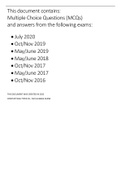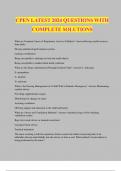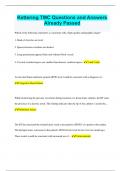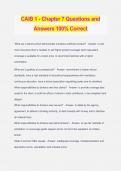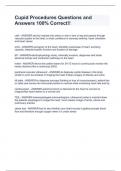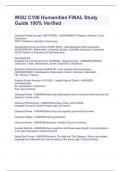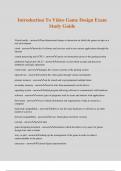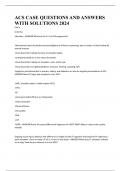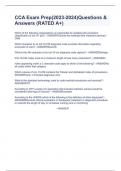Exam (elaborations)
Exam (elaborations) CMY3702 CRIME TYPOLOGIES (cmy3702)
- Institution
- University Of South Africa (Unisa)
The document you need to pass your CMY3702 exam! This document contains questions and answers from the following exams: • July 2020 • Oct/Nov 2019 • May/June 2019 • May/June 2018 • Oct/Nov 2017 • May/June 2017 • Oct/Nov 2016
[Show more]
